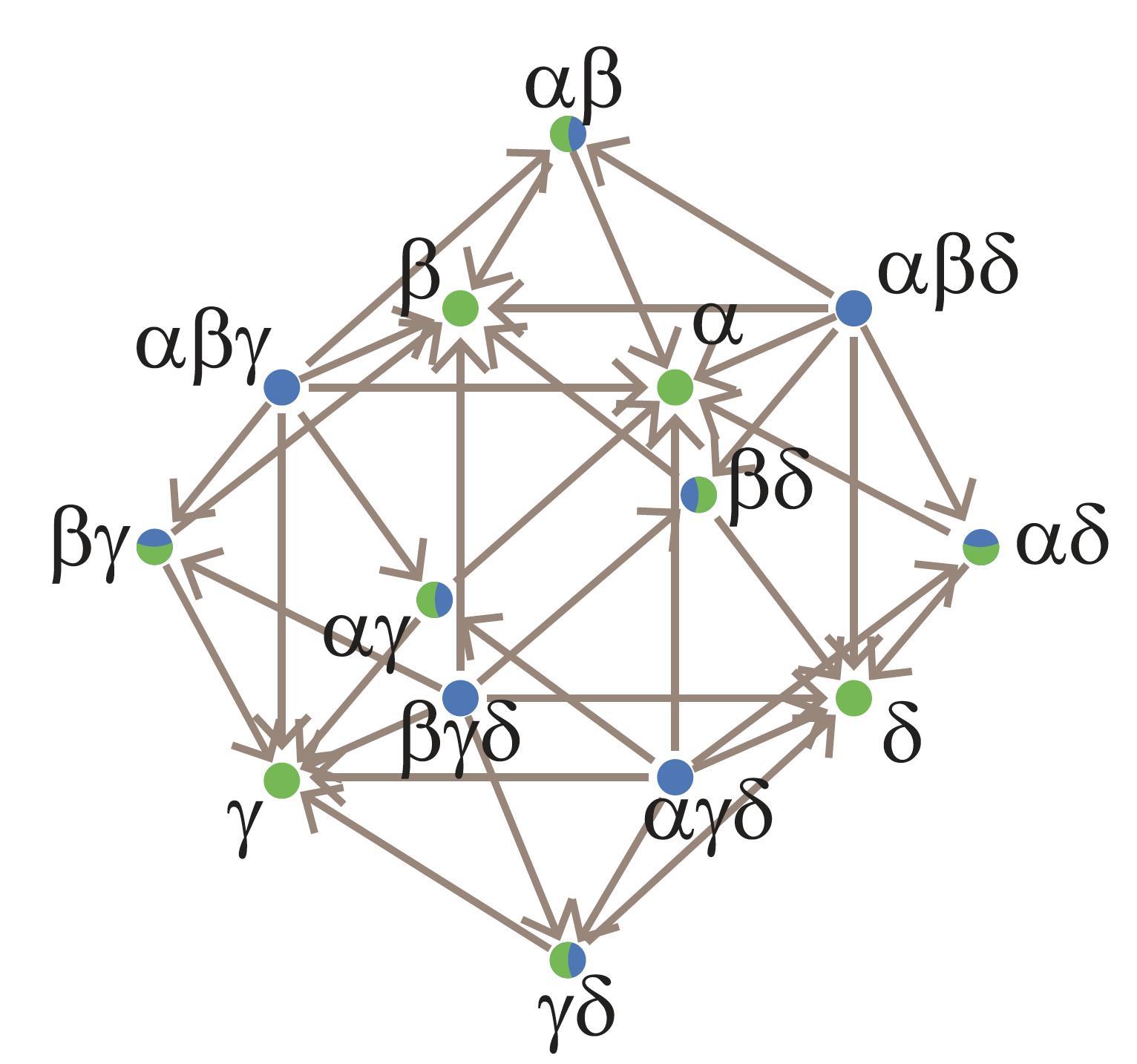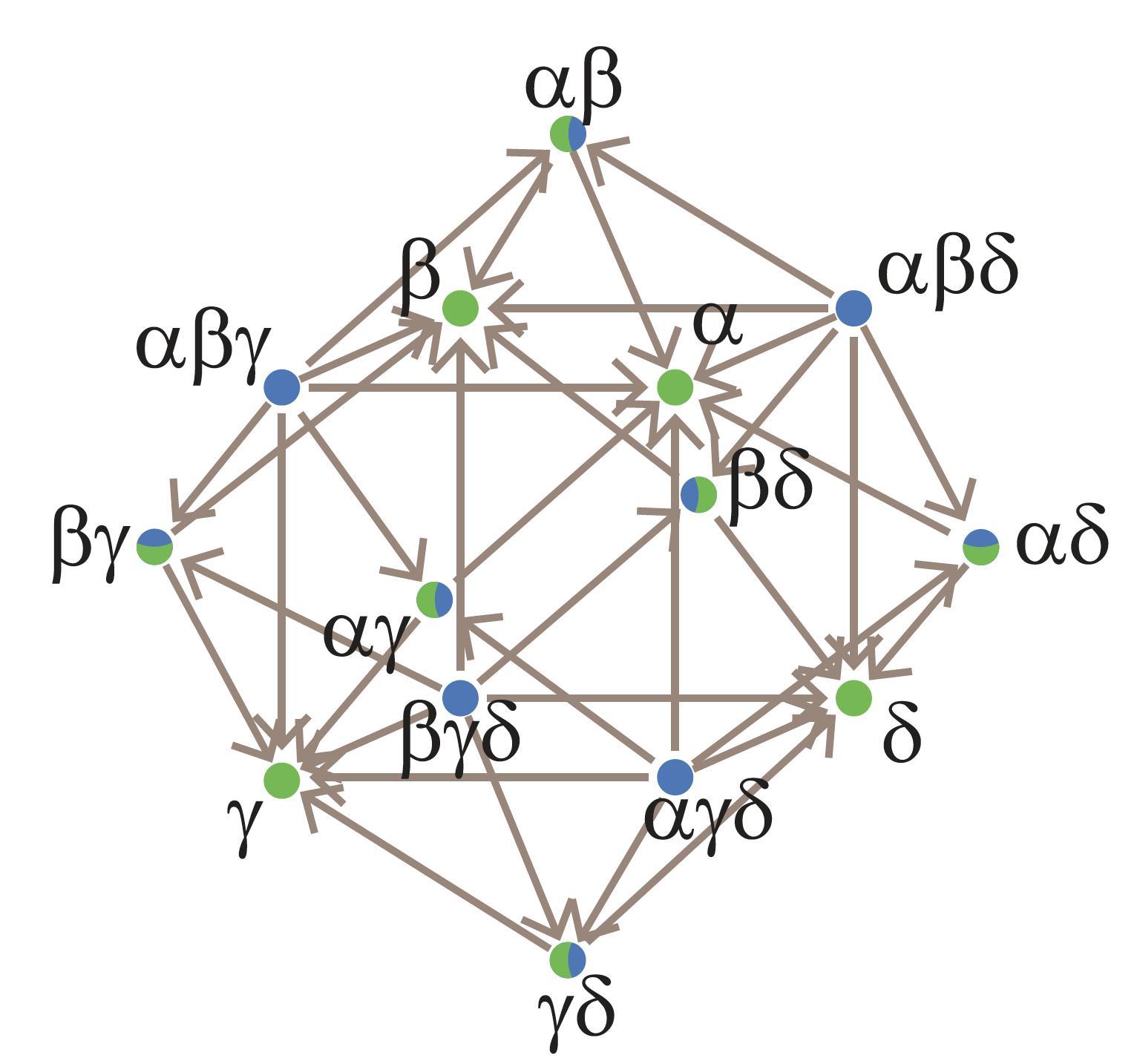
Was Lewis Carroll an Amazing Oppositional Geometer? (2014), p. 398
by Moretti, Alessio

Copyright according to our policy
Caption
- Carroll–Richards' tetrahedron is in fact an oppositional tetrahexahedron.
- Aristotelian family
- Classical Sigma-7
- Boolean complexity
- 4
- Number of labels per vertex (at most)
- 1
- Uniqueness of the vertices up to logical equivalence
- Yes
- Errors in the diagram
- No
- Shape
- Rhombic Dodecahedron (irregular)
- Colinearity range
- 0
- Coplanarity range
- 0
- Cospatiality range
- 0
- Representation of contradiction
- By central symmetry
Logic
Geometry
- Conceptual info
- No
- Mnemonic support (AEIO, purpurea ...)
- No
- Form
- dots
- Label type
- symbolic
- Symbolic field
- logic
- Contains partial formulas or symbols
- Yes
- Logical system
- predicate logic
Vertex description
Edge description
- Diagram is colored
- Yes
- Diagram is embellished
- No
- Tags
- Boolean closed ;
- existential import
Style
Additional notes
- With the bitstrings based on this partition, the formulas of this diagram (in Greek notation) can be represented as follows:
1000 = $ \alpha\beta\delta $
0100 = $ \alpha\beta\gamma $
0010 = $ \alpha\gamma\delta $
0001 = $ \beta\gamma\delta $
1100 = $ \alpha\beta $
1010 = $ \alpha\delta$
1001 = $ \beta\delta $
0110 = $ \alpha\gamma $
0101 = $ \beta\gamma $
0011 = $ \gamma\delta $
1110 = $ \alpha $
1101 = $ \beta $
1011 = $ \delta $
0111 = $ \gamma $
Note: $\alpha\beta$ means $\alpha\wedge\beta$ (cf. p. 391).